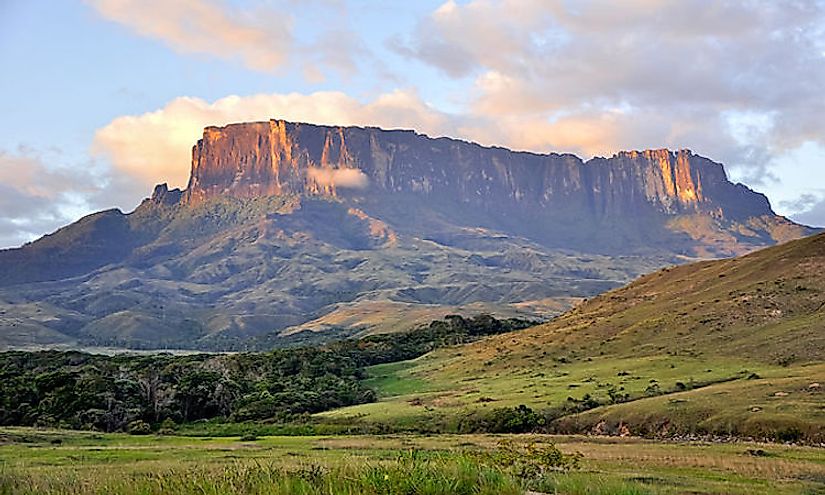What Is A Tepui?

What Is A Tepui And Where Is It Found?
Tepui is a word meaning the "house of the gods" in the indigenous language of the Pemon who inhabit the Gran Sabana area in Venezuela. A tepui is a table-top mountain or mesa found in the Guiana Highlands in South America. Tepuis are mostly located in western Guyana and Venezuela. Tepuis are likely to be found as solitary entities instead of connected ranges, therefore, making tepuis a natural habitat to a wide array of unique native plant and animal species. A tepui is typically made of Precambrian sandstone rock crystals whose sheer blocks abruptly rose from the jungle portraying a breathtaking, natural scenic beauty. Neblina, Mount Roraima, Autana, and Auyantepui are among the most remarkable tepuis in the South American region. Auyantepui is the source of Angel Falls which is the tallest waterfall in the world.
Formation Of Tepuis
Tepuis were formed by the remnants of a humongous sandstone plateau that used to shelter the granite's understructure between the Orinoco and Amazon's Basin in the northern border, amid Rio Negro and the Atlantic coastline. Since Earth's evolution, the plateau disintegrated resulting in the formation of tepuis from the monadnocks that remained behind. In Gran Sabana which is located in southeast of Venezuela, there are 115 tepuis. The highest concentrations of tepuis are found on the Venezuelan border with Brazil and Guyana. Most of these tepuis are situated in the Cainama National Park of Venezuela. The national park was also listed by UNESCO as a World Heritage Site.The highest table-top mountain soars above the neighboring area by up to 1,000 meters. The tepuis vary between 1000 to 3000 meters above sea level.
Due to their old age some tepuis have features on their surface and subsurface caves that were formed in rocks that are soluble in water such as limestone. One of the most notable tepui caves includes the Abismo Guy Collet which has a depth of 671 meters making it the deepest in the world of quartzite nature. Some of the tepuis have gigantic sinkholes that are about 300 meters in diameter and 300 meters in depth. tepui sinkholes are formed by the collapsing of underground rivers which carve on the roofs of tunnels.
Ecological Importance Of Tepuis
Since tepuis are entirely isolated from the ground forest they are considered to be biological Islands. Due to their height, tepuis have a different climate from the ground forest. The top of the tepui experiences frequent rainfall with cool temperatures whereas the base of the tepui experiences warm and humid, tropical climates.
The isolation of the tepui has also made it possible for the habitation of native flora and fauna over centuries of a different world of plants and animals that were separated from the entire world by the dominating walls made of rock. Some of the sinkholes in the tepuis comprise of plant and animal species that have evolved within the tepui and are adapted to that particular sinkhole. The tepuis are also known as the Galápagos Islands of the mainland since they have a wide array of rare plant and animal species that can only be found there and nowhere else in the world. The tepui floors contain very little nutrients thus allowing for the growth of a wide variety of carnivorous plants, bromeliads, and orchids. Since tepuis have a craggy and weathered rocky ground there can never be formation of any humus layer.











